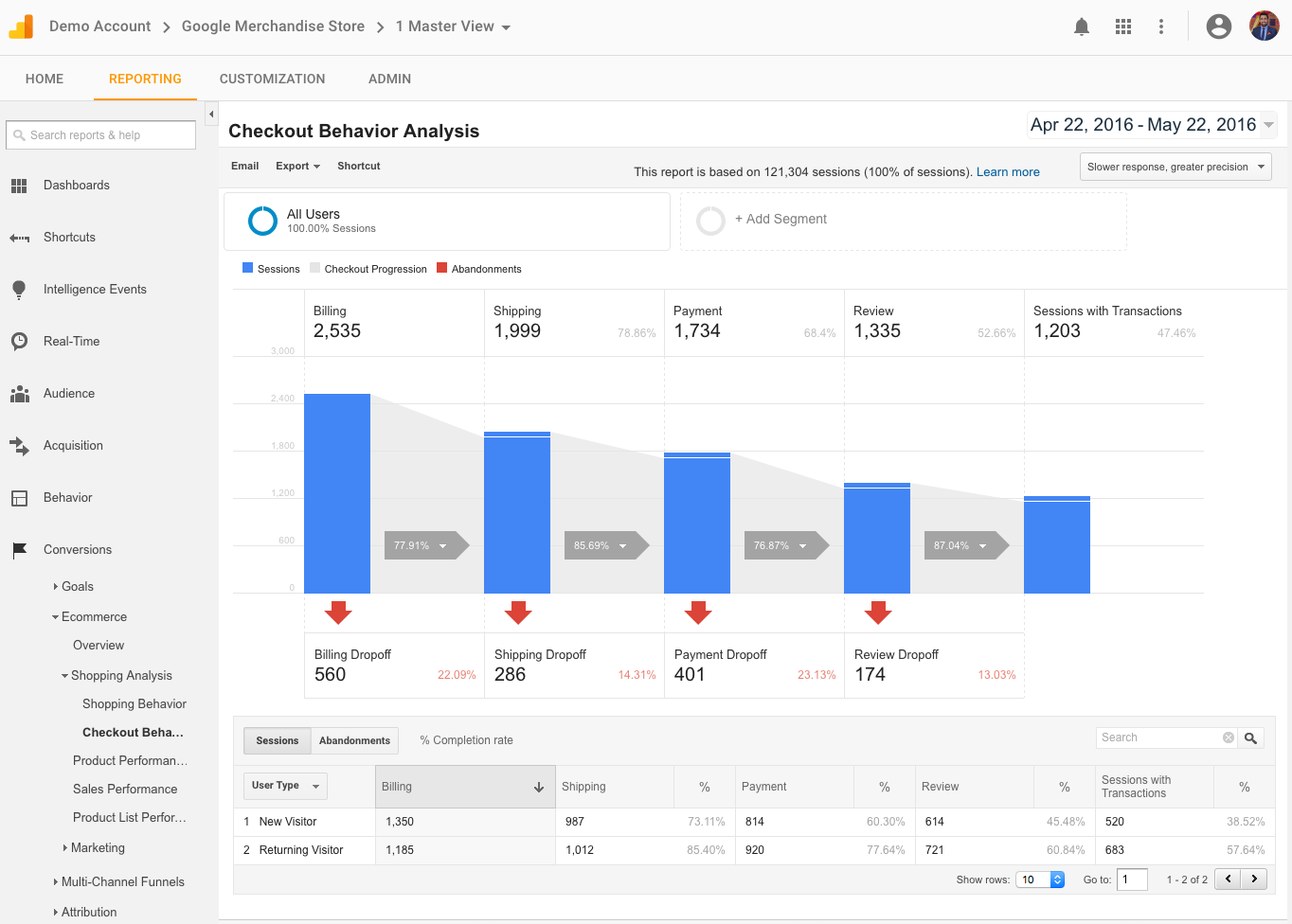9 Best Product Analytics Tools for Your SaaS

Kate Williams
Last Updated: 23 May 2024
16 min read

There was a time when the tech industry heavily focused on development services. While those services still play a crucial role, the spotlight has now shifted towards SaaS products. This growth underscores the need for SaaS businesses to stand out from the crowd. They will need to constantly check and enhance user experience.
So, how can they do that? Product analytics tools!
These tools can unlock valuable insights, optimize user experiences, and drive growth. We have researched and compiled a list of nine best product analytics tools, discussing their features, limitations, pricing, and more.
Let’s delve into it.
Top 9 Product Analytics Tools
We have done thorough research online and found out there are a lot more tools available for product analysis. This includes survey software and digital adoption platforms to dedicated product analysis tools. Here’s a quick overview of the tools –
- SurveySparrow – Best for product feedback and analytics
- Google Analytics – Best for web analytics
- Amplitude – Best for user behavior analytics
- Mixpanel – Best for event tracking and user-centric analysis
- Whatfix Analytics – Best for product adoption and analytics
- UXCam – Best for mobile app analytics
- Pendo – Best for product experience management
- Heap Analytics – Best for historical data analysis
- Hotjar – Best for identifying usability issues
Kindly go through each tool and choose the one that meets your requirements.
1. SurveySparrow

While it’s not the conventional tool for product analysis, SurveySparrow can help you understand the ‘WHY’ behind the ‘WHAT’. For instance, a typical product analytics tool can let you know there has been a decrease in product usage. However, with survey feedback, you can know why it happened, helping you take the necessary steps to improve it. Here are a few other ways SurveySparrow can help with product analytics.
Customer Satisfaction and Feedback Loops
Understanding whether your customers like what you are offering is key to the success of any product. And what better way to understand this than through surveys? Implementing regular feedback mechanisms helps you understand how changes in the product affect user satisfaction over time.
Take a look at SurveySparrow’s product evaluation template. It’s free, so feel free to use it.
Product Evaluation Survey Template
Use This TemplateFeature Request and Prioritization
Providing what your users want can be the distinguishing factor for you in the market. And you can do this effectively with the help of surveys. Through target surveys, input is gathered on what features users want next or how they prioritize existing features.
You can ask survey questions like –
- “Describe a feature you’ve seen in another product that you’d love to see in ours.”
- “Please rank the following features in order of importance to you, with 1 being the most important.”
This way, you can invest in the right place, and the feature will have a significant impact on user engagement.
Market Research and Validation
You can use surveys to analyze whether your new product is gathering interest among the target audience. This way, you can identify the market demand for your product. Furthermore, you can refine your product based on user feedback before the full-scale launch.
How can it impact? Reduced the risk of product failures by meeting user expectations.

Churn Analysis
Surely, other product analytics tools can identify the churn rate. However, only with timely surveys can you make sense of why this is happening.

Send out exit surveys to users who have decided to stop using your product. The feedback will provide you with insights that can be used to improve the overall product experience. As a result, you can lower the churn rate – consequently improving retention.
Other ways SurveySparrow helps with product analysis include –
- Segment users based on user feedback and references.
- Gather target feedback on product usability and user experience.
- Collect insights at crucial touchpoints in the customer journey to enhance user experience.
- Understand the impact of specific product updates by measuring user satisfaction.
- Evaluate how your current pricing or price changes affect user acquisition or retention.
- Identify how different user segments engage with your product across various platforms.
Key features that help with product analytics
- Customizable surveys that are chat-like and conversational with a wide range of question types.
- Survey sharing through 10+ channels, including in-app, WhatsApp, and QRcode.
- Robust integrations with CRM and product analytics tools like HubSpot, PowerBI, and Google Analytics.
- Dashboards that provide real-time insights into survey responses and key metrics.
- Advanced analytics features like sentiment analysis and text analytics for qualitative feedback.
- Optimized for mobile devices to ensure surveys are easily accessible.
- Capability to trigger surveys based on user actions or milestones within the product.
- Compliance with global data protection regulations such as GDPR to safeguard respondent privacy.
- Automated workflows to send follow-up messages or reminders to non-respondents, increasing response rates.
Integrations: HubSpot, Google Analytics, PowerBi, Zapier and more
Free Version: Available
Free Trial: Available
Starting Price: $19 per month (billed annually)
Enhance Your Product Analytics With Targeted User Feedback
Try for Free!
14-Day-Free Trial • Cancel Anytime • No Credit Card Required • Need a Demo?
2. Google Analytics

Google Analytics is a powerful web analytics service offered by Google that tracks and reports website traffic. It also supports mobile app analytics, making it a suitable tool for product analysis. GA4 can give you invaluable insights into user behavior and website performance.
Key Features
- Real-time tracking of your site or app activity. This helps you understand how many users are online, the pages they are visiting, and more.
- Audience insights include detailed user demographics, interests, and behavior on your site or app.
- Analyzes user interaction to offer insights into how to improve user engagement.
- User flow and path analysis can identify potential friction points and opportunities for optimization.
- Event tracking to record user interactions, giving you a comprehensive picture of user engagement.
Limitations of Google Analytics
- Difficult to track users seamlessly across multiple devices
- Default attribution models may not accurately reflect the conversion path
- Users blocking cookies or JavaScript can lead to data gaps
- The data is hosted on Google’s servers with limited export options
Integrations: Google Suite
Free Version: Available
Free Trial: Available
Starting Price: It’s completely free
3. Amplitude

Amplitude is a dedicated product analytics platform. It helps companies track, analyze, and optimize their user experiences. It provides detailed insights into user behavior, allowing you to understand how users interact with your products.
Key Features
- Granular analysis of user behavior bys capturing user interactions on a product.
- Real-time analysis of user action provides insights into how changes affect user behavior.
- Cohort analysis to track how specific user groups engage with the product.
- Visualizes the entire user journey within the product. This way, you can identify common routes to conversion or points where users drop off.
- Detailed retention analysis into how long users continue to use the product after their first visit.
- Supports A/B testing and experimentation through integrations.
Limitations of Amplitude
- Steeper learning curve
- Historical data analysis is limited to the past 365 days
- Very hard to set up integrations
- Advanced features require higher-tier and more costly plans
Integrations: Snowflake, Adobe Analytics
Free Version: Available
Free Trial: Not Available
Starting Price: $49 per month (billed annually)
4. Mixpanel

Like Amplitude, Mixpanel is a powerful analytics platform. It specializes in tracking user interactions with web and mobile applications. You can get detailed insights into how users engage with a product. This allows you to make data-driven decisions to foster growth and improve user experience.
Key Features
- Tracks and record user interactions within an app or a website.
- Segment users based on their actions, demographics, or any custom properties.
- Retention analysis to track how often users return to your product and engage with it over time.
- Cohort analysis to track how specific user segments engage with your product.
- Predictive analysis to predict user behavior using historical data.
Limitations of Mixpanel
- Steep learning curve
- The customization options are limited
- The data provided is too granular for quick insights
Integrations: Braze, AppsFlyer, Slack
Free Version: Available
Free Trial: Not Available
Starting Price: $24 per month (billed annually)
5. Whatfix Analytics

Whatfix Analytics is a product analytic tool offered by the tool – Whatfix. It makes it easy to track and analyze user behavior for informed decision-making. The tool also provides interactive guides and in-app support to enhance user engagement and experience.
Key Features
- Customize in-app flows tailored to specific user actions.
- Gather user feedback directly from the app, providing insights into user satisfaction.
- Tracks how users interact with the application, identifying patterns and areas for improvement.
- Robust integration with other analytics tools for a comprehensive view of user behavior.
Limitations of Whatfix
- Not very intuitive or easy to use
- Lacks features compared to dedicated product analytics tools
- Limited customization options
Integrations: Amplitude, Google Analytics
Free Version: Not Available
Free Trial: Not Available
Starting Price: The pricing details of Whatfix are available upon request.
6. UXCam

UXCam is an analytics platform that provides insights into user behavior for mobile apps. It captures and analyzes user interactions to identify usability issues and areas for improvement. This is one of those handy tools for product managers looking to create user-centric apps.
Key Features
- Maps out the complete path users take within the app, from entry to exit.
- Heatmaps will show where users tap, swipe, and interact with the app.
- Record sessions of user interactions with the app to get live context on how users engage with your app.
- Automatically captures sessions that lead to crashes. This way, you can see what exactly led to the crash and resolve it quickly.
Limitations of UXCam
- Very few integrations compared to other product analytics tools
- Don’t support web analytics
- Lacks cohort analysis
Integrations: Zendesk, Intercom
Free Version: Not Available
Free Trial: Not Available
Starting Price: The pricing details are available upon request.
7. Pendo

Pendo is a comprehensive product experience platform with a focus on mobile apps. It provides a suite of tools to analyze, guide, and interact with users directly within web and mobile applications. The tool is designed for product teams looking to understand user behavior and enhance user engagement.
Key Features
- Collects user feedback on features, usability, and general satisfaction through in-app surveys.
- Segments users based on behavior, demographics, or any custom attributes.
- Engages users with targeted in-app messages, announcements, and tooltips.
- Allows for the analysis of historical user data without the need to have tracked specific events in advance.
Limitations of Pendo
- It’s lengthy and hard to set up
- Expensive for startups and SMBs
- Not compatible with Flutter mobile apps
Integrations: HubSpot, Confluence, Intercom
Free Version: Available
Free Trial: Not Available
Starting Price: $3500 per year
8. Heap Analytics

Heap Analytics is a digital analytics tool that automates the collection of web and mobile user interactions. It helps you understand customers’ behavior without the need for a manual tracking setup. The user data can be further used to optimize user experience and drive product growth.
Key Features
- Automates event tracking without the need for manual tracking codes.
- Best in class for retroactive analytics (analyzing historical user data).
- Analyzes the behavior of specific user segments (cohort) through cohort analysis.
- A/B testing tools to measure the impact of different approaches on user behavior.
- Path analysis to uncover common paths and behaviors that lead to conversion or drop-off points.
Limitations of Heap Analytics
- Lack of custom property filters
- Very steep learning curve
- Basic graph analysis
Integrations: Salesforce, Intercom, WalkMe
Free Version: Available
Free Trial: Not Available
Starting Price: Details of their pricing are available upon request.
9. Hotjar

Hotjar is a user analytics tool that provides insights into user behavior on websites and web apps. The qualitative data retrieved can provide a fuller picture of user behavior and experience. It offers a visual and interactive way to understand how users interact with a product.
Key Features
- Visual representations of where users click, scroll and move their mouse. This helps identify popular areas and potential points of confusion or disinterest.
- Record user sessions to see how real users navigate your website.
- Conversion funnels to analyze the steps your users take to complete a goal. You can also find areas where users drop off.
- Customizable polls to collect user feedback about specific features or overall site experience.
- Segment heatmaps, recordings, and feedback by type of user, source of traffic, and behavior on the site.
Limitations of Hotjar
- Not best for quantitative analytics
- Fewer integrations than other product analytics tools
- Limited capabilities for in-depth mobile app analytics
- Lacks advanced analysis features compared to more specialized analytics platforms.
Integrations: Amplitude, HubSpot, Slack
Free Version: Available
Free Trial: Available
Starting Price: $32 per month for 100 daily sessions (billed annually)
How Do You Choose the Right Product Analytics Tool?
We only discussed the top 9 product analytics tools. There are a lot more than that available. Therefore, choosing the right one for your business can be a daunting task. Kindly refer to the following table to see the steps to follow to select the right tool.
| Step | Focus Area | Key Considerations |
|---|---|---|
| 1 | Define Your Goals | Identify crucial metrics and insights. |
| 2 | Check Integration Capabilities | Ensure compatibility with your tech stack. |
| 3 | Evaluate Key Features | Look for features like real-time analytics and event tracking. |
| 4 | Assess Scalability | Can it handle your growing data volume? |
| 5 | Review Compliance | Adherence to data privacy and security regulations. |
| 6 | Consider Usability | It should be user-friendly with reliable customer support. |
| 7 | Look at Pricing | Ensure good value within your budget. |
| 8 | Trial and Feedback | Utilize free trials or demos and gather team feedback. |
Consider these factors, especially the features, when choosing an analytics tool. Following this approach helps you select a tool that fits your current needs and scales with your organization’s growth.
FAQs
1. What is product analytics?
Product analytics is analyzing user interaction with a product to improve its performance and user experience.
2. What are product analytics tools?
Product analytics tools are software that help analyze user behavior and engagement with a product to guide improvement strategies.
3. What are some tools for user data analytics?
Some tools you can use for user data analytics are Google Analytics and Mixpanel. However, if you want to get actionable insights directly from users, then try SurveySparrow.

Kate Williams
Content Marketer at SurveySparrow
You Might Also Like

Turn every feedback into a growth opportunity
14-day free trial • Cancel Anytime • No Credit Card Required • Need a Demo?




